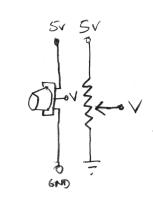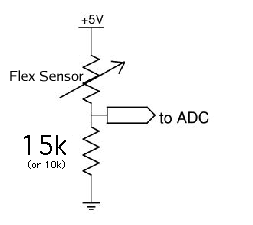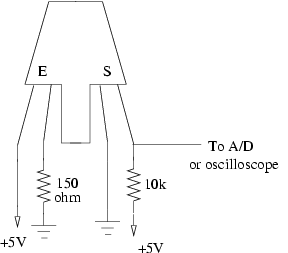Difference between revisions of "Stompbox Rapid Prototyping"
| (2 intermediate revisions by the same user not shown) | |||
| Line 1: | Line 1: | ||
<font size=5>Lab 3: Rapid Prototyping</font><br> | <font size=5>Lab 3: Rapid Prototyping</font><br> | ||
| − | Designed by Edgar Berdahl | + | Designed by Edgar Berdahl |
Making an enclosure is time-intensive, so in the context of the workshop, we recommend exploring ideas and designs first in a rapid prototyping context. | Making an enclosure is time-intensive, so in the context of the workshop, we recommend exploring ideas and designs first in a rapid prototyping context. | ||
| Line 21: | Line 21: | ||
The reflective optical sensor consists of an infrared LED and a phototransistor that passes an amount of current proportional to the reflected light received. We use two kinds at CCRMA, the Fairchild [http://ccrma.stanford.edu/courses/250a/docs/datasheets/QRB1114.pdf QRB1114] has the letter "E" (Emitter) to label the LED, and the label "S" (Sensor) for the phototransistor. The Optek [http://ccrma.stanford.edu/courses/250a/docs/datasheets/OPB703.pdf OPB704] uses the symbols for an LED and a transistor to label the two sides. One leg of the sensor is connected to +5V, which supplies current, and the voltage drop across the 10k resistor that we measure is proportional to the amount of current. | The reflective optical sensor consists of an infrared LED and a phototransistor that passes an amount of current proportional to the reflected light received. We use two kinds at CCRMA, the Fairchild [http://ccrma.stanford.edu/courses/250a/docs/datasheets/QRB1114.pdf QRB1114] has the letter "E" (Emitter) to label the LED, and the label "S" (Sensor) for the phototransistor. The Optek [http://ccrma.stanford.edu/courses/250a/docs/datasheets/OPB703.pdf OPB704] uses the symbols for an LED and a transistor to label the two sides. One leg of the sensor is connected to +5V, which supplies current, and the voltage drop across the 10k resistor that we measure is proportional to the amount of current. | ||
| − | |||
| − | |||
| − | |||
| Line 29: | Line 26: | ||
= Experimentation With Fancier Audio Effects = | = Experimentation With Fancier Audio Effects = | ||
TBA. | TBA. | ||
| − | |||
| − | |||
| − | |||
| − | |||
| − | |||
| − | |||
Latest revision as of 06:01, 15 June 2016
Lab 3: Rapid Prototyping
Designed by Edgar Berdahl
Making an enclosure is time-intensive, so in the context of the workshop, we recommend exploring ideas and designs first in a rapid prototyping context.
Try Incorporating Other Sensors
- So far you have been using a potentiometer for controlling effect parameters:
- but you could also use a force-sensitive resistor (FSR):
- or a bend sensor
- or a photoresistor
- or an optical reflective sensor
The reflective optical sensor consists of an infrared LED and a phototransistor that passes an amount of current proportional to the reflected light received. We use two kinds at CCRMA, the Fairchild QRB1114 has the letter "E" (Emitter) to label the LED, and the label "S" (Sensor) for the phototransistor. The Optek OPB704 uses the symbols for an LED and a transistor to label the two sides. One leg of the sensor is connected to +5V, which supplies current, and the voltage drop across the 10k resistor that we measure is proportional to the amount of current.
Experimentation With Fancier Audio Effects
TBA.
Important Note
Some small amount of the text and images here was taken from prior laboratory exercises for the course Music 250A. We regret that we do not know who contributed these elements, but these people are likely to include Wendy Ju, Bill Verplank, Michael Gurevich, and possibly more.




